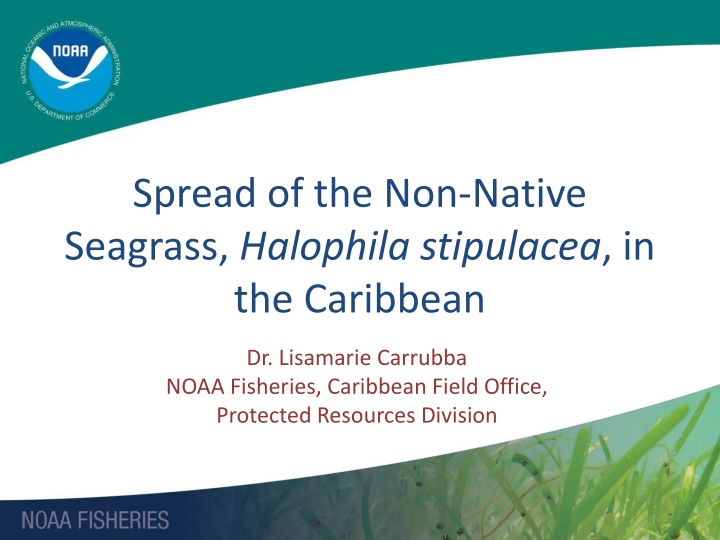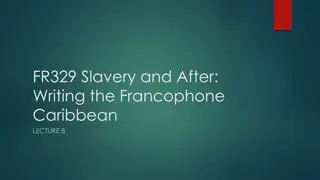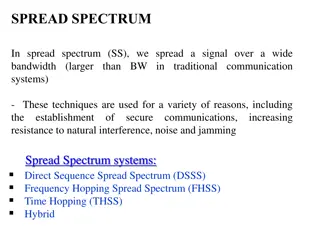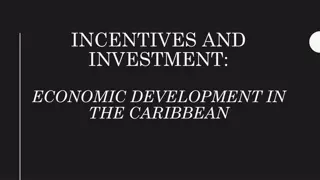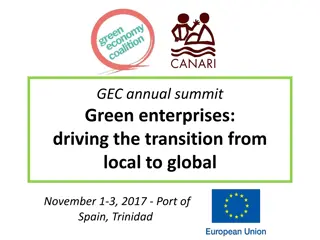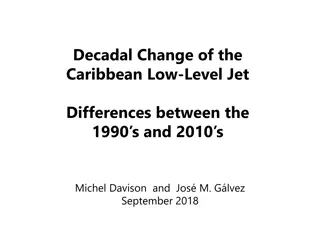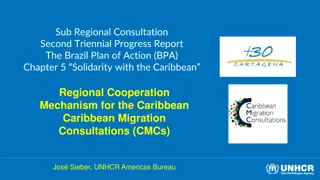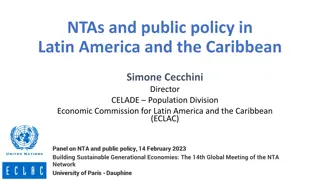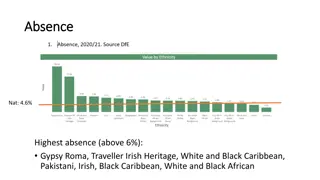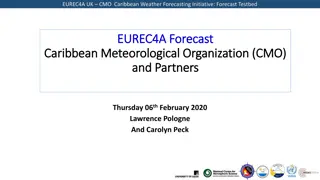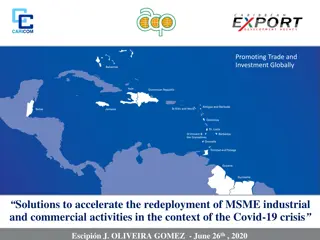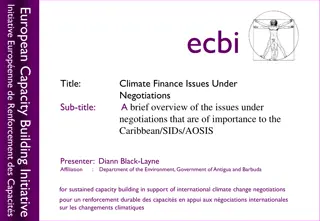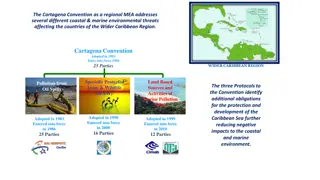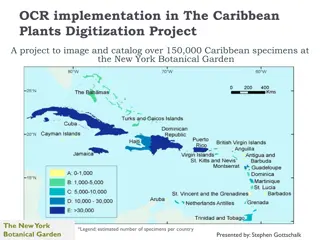Spread of Halophila stipulacea in the Caribbean: A Growing Concern
The non-native seagrass, Halophila stipulacea, has rapidly spread throughout the Caribbean, impacting the marine ecosystem. Originally from the western Indian Ocean, it invaded the Mediterranean and then reached the Caribbean in 2002. Its characteristics include tolerance to various conditions, rapid growth, and high adaptability. Studies show its capacity for extensive spread, outcompeting native species. Efforts are underway to monitor and manage its proliferation to protect the biodiversity of the region.
Download Presentation

Please find below an Image/Link to download the presentation.
The content on the website is provided AS IS for your information and personal use only. It may not be sold, licensed, or shared on other websites without obtaining consent from the author.If you encounter any issues during the download, it is possible that the publisher has removed the file from their server.
You are allowed to download the files provided on this website for personal or commercial use, subject to the condition that they are used lawfully. All files are the property of their respective owners.
The content on the website is provided AS IS for your information and personal use only. It may not be sold, licensed, or shared on other websites without obtaining consent from the author.
E N D
Presentation Transcript
Spread of the Non-Native Seagrass, Halophila stipulacea, in the Caribbean Dr. Lisamarie Carrubba NOAA Fisheries, Caribbean Field Office, Protected Resources Division
History of Spread Native to western Indian Ocean Red Sea and Persian Gulf, as well as coastal islands of Eastern Africa and Southeast coast of Indian subcontinent In 1800 s began to invade Eastern Mediterranean Sea via Suez Canal Reached Malta in 1970, Ionian Sea in 1992, and north coast of Sicily in 1997 First reported in Caribbean in 2002. Thought to have originally come from pleasure yacht traffic between Mediterranean and Caribbean. Eggs Larvae Juveniles Adults Atlantic Cod EFH
History of Halophila stipulacea in Caribbean 1. 2. Observed in Flamingo Bay, Grenada in 2002 (Ruiz and Ballantine 2004) Documented in Dominica and St. Lucia in 2009, including competition with Syringodium filiforme (manatee grass) (Willette and Ambrose 2009) Reported from Aruba, Cura ao, Grenadines (Grenada), St. Eustatius, St. John (USVI), St. Martin (France), and St. Vincent and the Grenadines (Willette et al. 2014) Site of Westin Hotel, Cruz Bay, St. John surveyed in 2005, 2012, and 2013 for dock replacement project no seagrass in footprint. Site resurveyed in March 2015and approximately 0.4 acre area around dock colonized by Halophila stipulacea. Benthic surveys for projects in Charlotte Amalie and Crown Bay areas, St. Thomas, found it dominates in portions of Long Bay and Crown Bay (2014-2015) Site inspections by NMFS to Flamingo Bay (dominant species) and Honeymoon Bay (patch), Water Island (July 2015) UVI tracking it in Brewers Bay (2010 not present, now spreading) Recently observed in 3 locations around Culebra and associated islands/cays (July 2015) 3. 4. 5. 6. 7. 8.
Characteristics of Halophila stipulacea 1. Can tolerate a wide range of salinities 2. Can grow in very shallow water as well as depths greater than 50 m 3. Can grow in a range of substrate types 4. Speculated survival for extended periods as floating fragments and in vessel anchor wells 5. Rapid vegetative expansion 6. Adaptation to high irradiance 7. Male and female and have been observed flowering in Caribbean
Capacity for Spread Preliminary experiments off St. John in 2014 showed lateral growth up to > 6 m/day Up to 50% increase in biomass in 7 days Fish and invertebrates preferentially grazed on native seagrass species Density up to > 10,000 shoots/m2
Capacity for Spread Steiner and Willette (2014) observed an increase and replacement of native species over 5 years and extension into reef halos
Opportunity NOAA CRCP FY16 RFP includes jurisdictional priority from USVI DPNR to to support the investigation of effects and management of invasive species, such as addressing key gaps for improving the understanding of ecosystem impacts from Halophila stipulacea
Collaboration Partners: UVI, NPS, and Dr. Willette (UCLA) Education and Outreach: updates to UVI webpage for reporting sightings (http://geocas.uvi.edu/citseagrass.php) Workshop to discuss potential impact in region (led by Dr. Wyllie- Echeverria who led work on Zostera japonica in Northeast Pacific) Questions: Degree to which Halophila stipulacea provides habitat to marine organisms (nutritional content, herbivory levels, habitat use) Whether it co-exists or out-competes native seagrass species Dispersal predictions based on data on current spread
Regulatory Context CFMC categorizes seagrass as EFH no species-specific designation ESA language about habitat for green sea turtle also discusses broad category of seagrass More projects with impacts to Halophila stipulacea affect EFH and ESA consultations and mitigation decisions
Questions? Flamingo Bay, Water Island M. Padover Dakity, Culebra Island
